Planning to grow your business by building a network of stores? Want to introduce new product lines and reach new locations? Wondering how to manage these multiple storefronts easily?
The answer is simple!
You need to look for the best multi store ecommerce platform that can help you build and manage your storefronts from a centralized admin.
But before you jump into finding the right software solution, would you like to understand why this model is better than having multiple online stores?
You certainly are interested! Right? So here go and learn everything about the multi store model for ecommerce.
Table of Contents
- What is multi store ecommerce?
- Why is the Multi Store Ecommerce Model good for your business
- Multiple Benefits Of Multi Store Ecommerce
- What Is A Multi Store Ecommerce Platform?
- Best Multi Store Ecommerce Solutions for your business
- Choosing The Best-Fit Multi Store Ecommerce Platform for your business
- FAQ
What is multi store ecommerce?
As the name suggests, multi store ecommerce refers to an online business set-up where a business has multiple digital storefronts based on location, product lines, brands, vendors, customer groups or any other criteria.
Enterprise businesses that have multiple product lines and businesses spread in diverse geographies, inadvertently have to turn to the multi-store model. The multistore model enables large businesses to manage different stores, branding, marketing strategies etc. in an efficient, uniform and coordinated manner.
The multi store ecommerce model eases the complexity of handling disparate stores as you get a centralized database for all stores. This centralized control helps in getting better brand visibility, planning strategic promotions and SEO strategies for better traffic and eventually conversions.
Multi store ecommerce solutions can be used in a variety of use cases. Some popular use cases are:
- Location-based multi store websites like yourstore.in for India, yourstore.de for Germany, yourstore.uk for United Kingdom etc.
- Product-line-based multiple storefronts, like online stores for different academic courses namely, MBA, MCA etc.
- A chain of sub-stores for diverse user groups under a single brand umbrella, like a fashion brand having different storefronts for budget clothes, designer clothes, sportswear etc.
The versatile multi store ecommerce can be used for a variety of use cases helping ecommerce brands chart a targeted growth strategy for their business.
Why is the Multi Store Ecommerce Model good for your business
Going with the multiple storefronts model is the shortcut to staying ahead of your competitors without additional effort. When you want to channelise and experiment with new product lines or marketing strategies, this is the best model to opt for.
Using the multiple storefronts model you get a new platform to experiment whereas this leaves your other products or customers unaffected. For example, you are running a T-shirt business. You want to have a dedicated storefront wherein you show special discounts to your registered members. You can easily have a login only storefront for these members while allowing regular organic traffic to land on your main store.
Also, having multiple storefronts gives your brand better brand visibility, better traffic and eventually conversions.
Multiple Benefits Of Multi Store Ecommerce
- Easily cater to the unique needs of a target audience group
- Create dedicated storefronts for different locations
- Build niche stores for better branding
- Implement unique store designs as per the target audience’s preferences
- Implement differential pricing and unique inventory on each sub-store
- Build language-specific sub-stores
- Offer location-based payment options
- Implement region-specific logistics for sub-stores
- Easily manage all your stores from a common database and central admin
- Get better insight into traffic, marketing deals, customer preferences in each store
- Go for targeted SEO and content strategy for each sub-store
Isn’t the list of benefits too tempting? Now, that we understand the clear cut advantages of this business model, let us understand the type of technical solution needed to support this setup.
What Is A Multi Store Ecommerce Platform?
Multi store ecommerce platform, as the name suggests is a software solution that helps in building multiple storefronts managed by a common central database or admin panel. It is akin to having a network of online stores with a central switch to manage each of the stores from one place.
Usually, turnkey multi store software comes with added benefits like inbuilt product and inventory management solutions, marketing solutions, design templates and tools, easy integrations with payment gateways, logistics providers etc. This makes the overall process of launching and managing your business easy.
A turnkey multi store ecommerce solution is a better bet than building your store from scratch as it gives you a tried and tested solution. It also reduces your overall launch and testing time and helps you go to the market in record time. Moreover, some of these solutions are fully hosted and managed thus freeing you from the burden of taking care of the technical aspects.
Best Multi Store Ecommerce Solutions for your business
Turnkey multi store solutions have many advantages. Let us review the 5 best turnkey ecommerce platforms for your multi storefront business model:
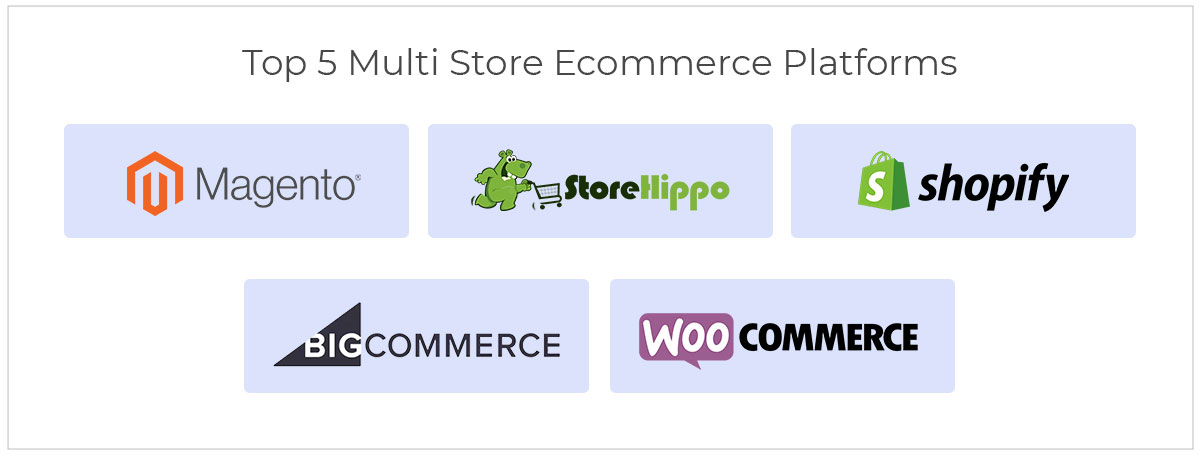
1. StoreHippo

StoreHippo is the top-ranking multi store ecommerce platform which offers an inbuilt multi-storefront solution for enterprise B2B and B2C businesses. You can easily add any number of storefronts and manage them with a common central dashboard.
StoreHippo lets you build stores based on customer type, products, location or any other chosen criteria. You can have different store designs, product catalogues, languages, payment solutions, shipping options, pricing, promotions etc. on each of these storefronts.
On top of it, you can also have unique store URLs for each of the sub-stores. You can also add store-specific language and currency options. StoreHippo also lets you have the same products at different pricing on your sub-stores using the pricing overrides features.
Using StoreHippo’s multi store ecommerce solution along with inbuilt marketing tools you can also give different deals to your customers in different sub-stores. You can also allow your customers to choose their preferred store based on their location or product preferences.
The group-store feature helps in grouping stores based on products, location etc. You can also ace hyperlocal ecommerce by building location-based sub-stores which offer faster delivery to your customers.
Along with these StoreHippo offers 300+ inbuilt solutions for marketing, CMS, payment gateways, shipping solutions, taxation, discount engine etc. The best thing is all these features are inbuilt and so you dont have to pay for any additional plugins or apps.
StoreHippo multi store ecommerce solution also lets you build multilingual stores with multi-currency payment options. You get 100+ customizable design themes to design different storefronts using the inbuilt drag-and-drop feature.
Built on the MACH (Microservices, API-first, Cloud-native, Headless) architecture, the decoupled headless platform StoreHippo makes it possible to implement multi-level personalisation easily. Enterprise businesses can build their tailor-made multi-store setup and personalize each storefront to cater to different audiences.
On top of it, StoreHippo’s inherently mobile-ready architecture gives you PWA stores that work just like mobile apps on all devices. You can also build different mobile apps right from your dashboard at no additional cost.
However, the StoreHippo multi-store feature cannot be availed if you are on entry-level plans. You would need to subscribe for the Business or Enterprise plan to be able to create multiple storefronts managed by a common central admin.
2. Magento ( Adobe Commerce)

Magento’s Commerce offers multi store ecommerce solution wherein you can set up multiple storefronts with the same domain or unique domains. You can customize your themes and also have different catalogues for your sub-stores.
You get a host of third-party extensions which help you in managing different processes of your multi-store environment. Magento also has a strong developer community that helps with customizations or any other issues faced by your IT team.
However, with multiple storefronts hosting becomes an issue with Magento and you will have to spend extra for having a dedicated high-speed server. Also, you would need experienced developers to manage, run and maintain your multiple storefronts along with fine-tuning your server requirements as your stores grow in number and scale.
Magento multi store ecommerce solution also has the issue of duplication as large chunks of data get duplicated for each sub-store. Implementing global multi-store solutions is difficult as adding different currencies to different stores remains a problem. The ongoing maintenance fee is high and the platform is known to have security issues. Also, the platform is known to be buggy for large-scale enterprise solutions.
The Magento platform keeps upgrading every few years. This makes migration an unwanted but necessary hassle which can be time-taking, resource-intensive and also cause downtime for your business. Migrating from one upgrade to another forces business to undergo cumbersome, costly and complex migration every few years.
3. Shopify
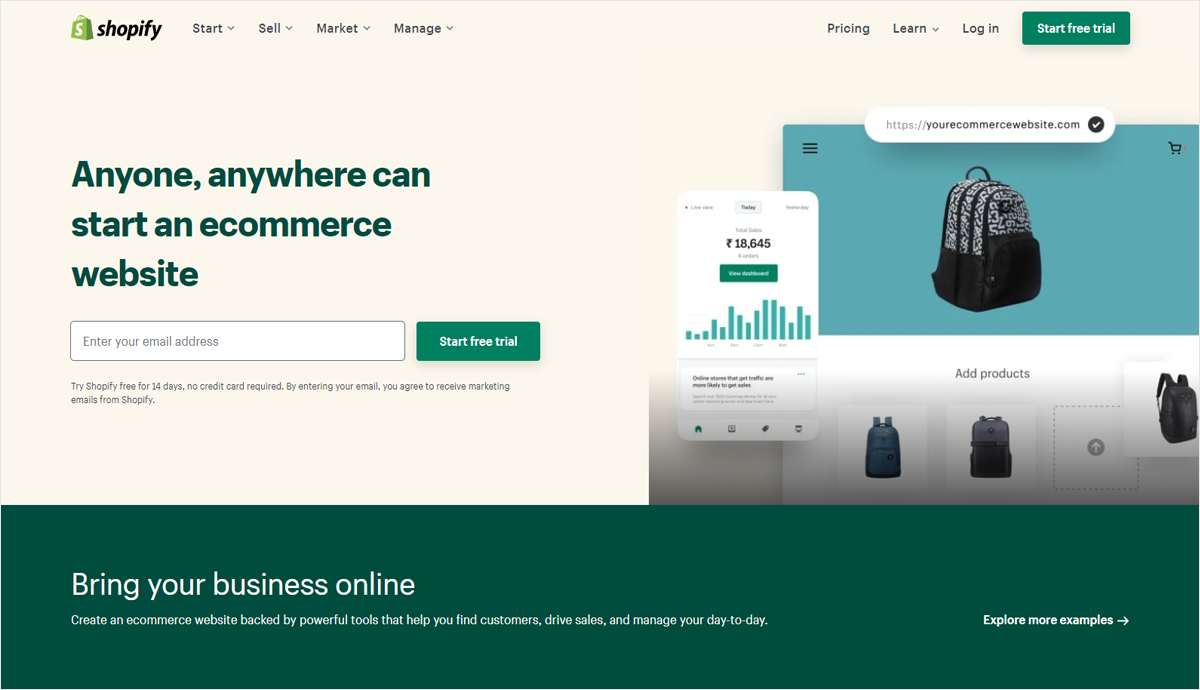
Shopify does not have an inbuilt multi store ecommerce solution and you will need to create multiple Shopify stores and manage them individually for running a multi store business. Shopify has some paid apps and plugins to manage multiple individual stores as a single business.
As you get multiple stores you can have different URLs, themes, pricing, payment gateways, languages, shipping solutions etc. on each of your individual stores. This is a good option if you have a small business as it gives you a lot of flexibility and freedom.
However, this set-up becomes difficult to manage as your business grows and you branch into multiple product lines and stores. Shopify multi store ecommerce solution does not have a dedicated app or extension for managing inventory, processing orders and integrating various third party software for multiple storefronts of your business.
Also, Shopify users complain that adding too many apps to manage the multiple storefronts and other functionalities make the whole set-up complex. Users who do not have prior coding experience will need to learn to code or hire experienced developers to handle the whole set up. Also, for adding each new store you would need to buy a new subscription. The overall cost thus multiplies hugely due to paid apps and multiple subscriptions.
4. BigCommerce
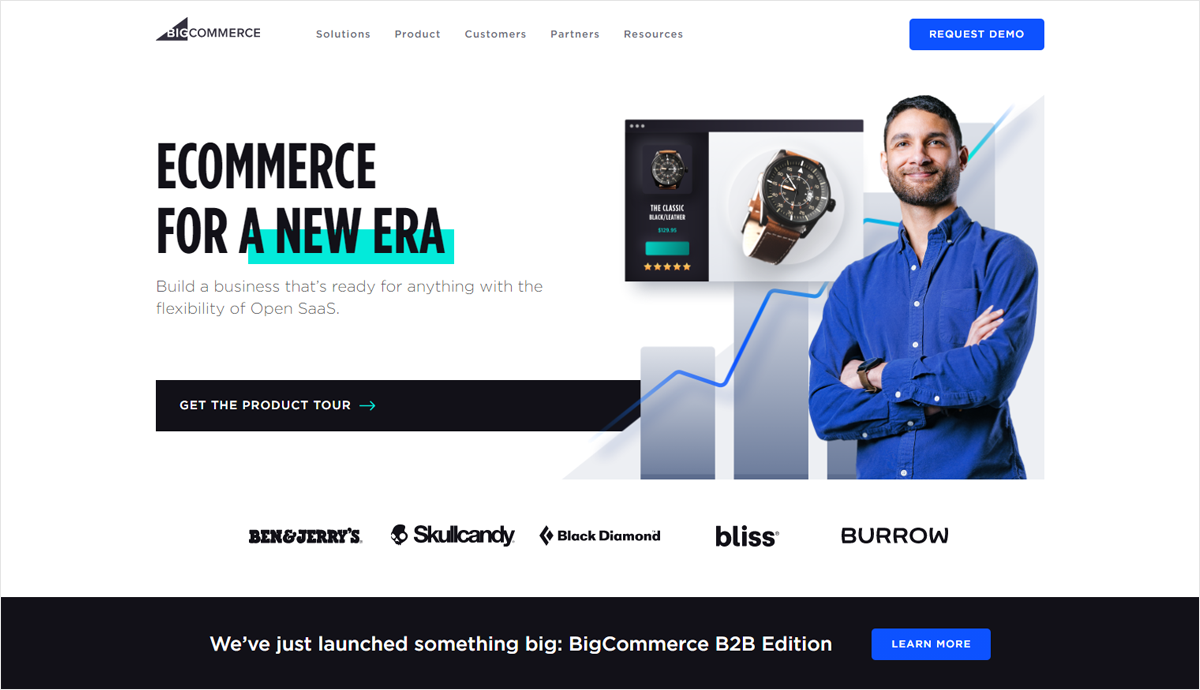
Alike Shopify, BigCommerce multi store ecommerce solutions are also based on customizations and workarounds as there is no native solution to build and manage multiple storefronts from a single admin panel.
BigCommerce offers lots of core features for running a regular ecommerce store for small as well as large enterprises. It also comes with inbuilt marketing solutions to help you add different marketing strategies for your multiple stores.
However, since it lacks native solutions for multi-store, multilingual etc. you will have to find workarounds and extensions to implement these.
This means that you will need skilled developers who can understand the platform, apps and implement the changes using the workaround for multi store ecommerce solutions. Also, alike Shopify you need to buy different plans for adding different stores. This means you will have to pay on top of your subscription charges and also have a budget for your IT team.
through its higher plans aimed at large and wholesale businesses. Designed for large selling requirements this plan offers features like advanced filtering, price lists for pricing overrides, API calls for third-party integrations etc.
BigCommerce pricing and limit on annual sales remain another issue for businesses.
5. WooCommerce
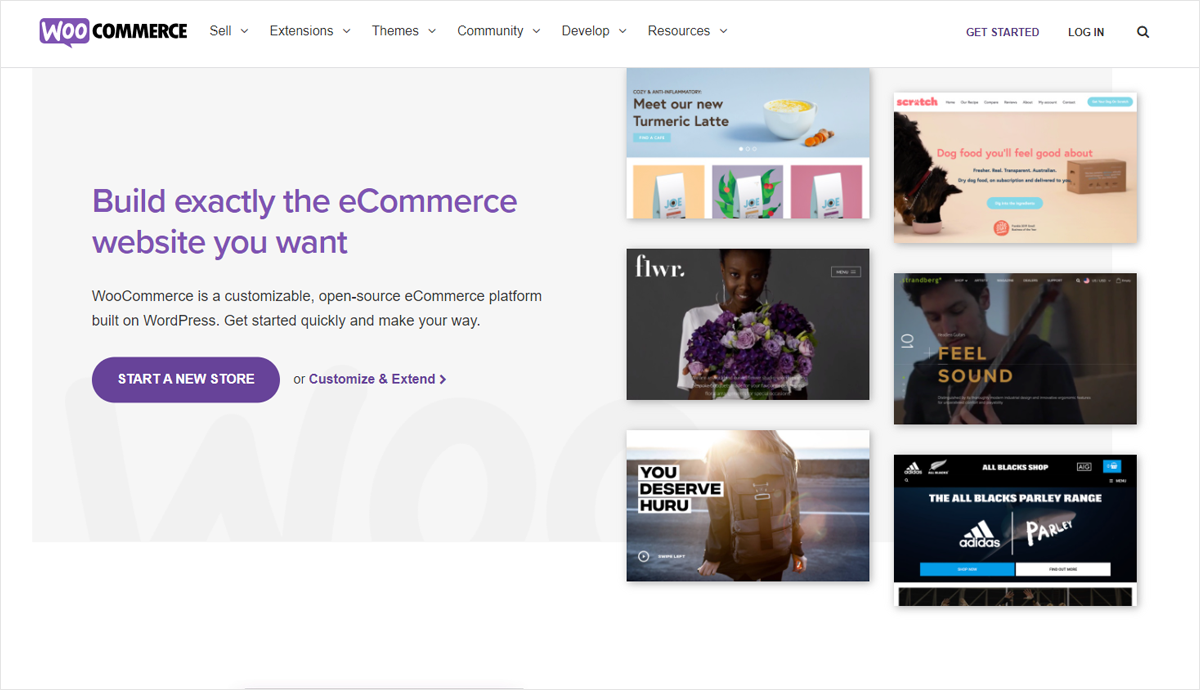
WooCommerce offers an open-source, plugin-based multi store ecommerce solution for running multiple storefronts for a business. You can manage all your sub-stores’ inventory with a central inventory and distribute the same products to different stores. You can manage and display products across different storefronts having the same or different domains and sub-domains.
You can use other paid or free extensions to manage your overall business and integrate with a number of different payment, marketing, logistics or mailing software for different business needs.
Since WooCommerce multi store ecommerce platform is open-source and customizable you can easily get solutions for almost all your customization requirements. However, since the platform is self-hosted you will have to take care of hosting, updates and overall maintenance.
Also, you would need experienced developers who already have worked on WordPress to handle your multiple stores and customizations needed on various storefronts or backends. The coding and scripting plugins also need good time investment on behalf of your IT team so the whole set up works in tandem.
If you want to implement different themes on your multiple storefronts it can become quite a task as the changes are usually complex. Due to the lack of important SEO tools in WooCommerce multi store ecommerce platform, you would have to have a trained person to handle issues like page doubling, canonical URLs etc.
Despite being open-source, WooCommerce is a pricey affair when you add the cost of hosting, upgrading, maintenance and hiring experienced developers.
Choosing The Best-Fit Multi Store Ecommerce Platform for your business
The multi store ecommerce model gives you a better growth opportunity and helps you in doing targeted marketing. It also helps you in experimenting with different business strategies with minimum effort and without hampering your established business processes.
However, to be successful in implementing this model you will need a stable and feature-rich software solution that can easily handle this unique set up and help you focus on business growth. While all the listed solutions in this article have their unique advantages you would need to thoroughly analyze each one before trusting them with your business.
Hope this with the detailed information and comparison presented in this article you will be in a better position to analyze and evaluate the right multi store ecommerce platform for your business. Before you seal the final deal, do check each of these on their features, cost of apps and extensions, ease of use, customizations and scalability.
All set to begin your quest? Start from the top one in the list by booking your StoreHippo free-trial now!
FAQ
1. Is multistore the same as having child stores?
Yes, you can put it that way. Though each sub-store in a multi store ecommerce set-up can be a unique entity in itself and have its own look and feel. However, since each sub-store is connected to the main store it is colloquially also called the child store.
2. What are some successful multi store ecommerce examples from the real world?
Multistore ecommerce is implemented by many successful enterprise brands across diverse industries. For example;
- Blinkit and BigBasket like hyperlocal ecommerce stores set up location-specific multiple sub-stores for different cities.
- Amazon-like multi-vendor marketplaces use country-specific stores to target a large audience segment in different countries.
- Hotel and hospitality chains like the Taj group can build different sub-stores with a unique look, feel and offers for their properties in different locations.
- Medical and healthcare service providers like Practo build different location-specific sub-stores with different sets of doctors, pharmacy services and other associated services.
- Gift and flower chains like Ferns and petals have multi store ecommerce solutions to target different location/country-specific customer groups.
3. Can we build different sub-stores with different languages and themes on our multi store ecommerce platform?
Yes, your multi store ecommerce solution should have the capability to easily implement different languages and themes for different sub-stores. Creating a unique store look and feel along with implementing localization by adding multiple languages makes it possible to engage customers better.
StoreHippo multi store ecommerce platform comes with advanced features and built-in support for multiple languages including RTL languages. You can easily design a unique look and feel for each sub-store using the built-in drag-and-drop tool. You can also mix and match themes to build new themes quickly.
4. Can we implement different prices for the same product in different stores?
Yes, if you are using StoreHippo multistore solutions you can implement different pricing on different stores easily using the pricing override feature. You can add different prices for a given product on different stores based on the location ( say if it is multi-country store you can add different currencies and prices, even for the same currency you can have different prices for different locations), user group ( like regular and premium members) etc. you can also implement your custom rules for setting different prices for the same product.
5. Does the side speed gets impacted as the number of stores goes up?
If you use a SaaS-based, fully hosted and managed multi-store ecommerce platform like StoreHippo you need not worry about the site speed and scalability. However, if you are using on-premise multi store ecommerce software you will have to consider the server space and provisioning to ensure your site speed does not slow even if you create many sub-stores.
6. Can we build different apps for different sub-stores?
If you use a multi store ecommerce platform that comes with built-in mobile apps solutions you can easily create multiple mobile apps for different sub stores. If your multistore solution does not have an inbuilt mobile apps builder you will have to invest additional time and resources in building different mobile apps for different stores.
StoreHippo comes with built-in mobile apps builder using which you can create individual apps for each sub-store.
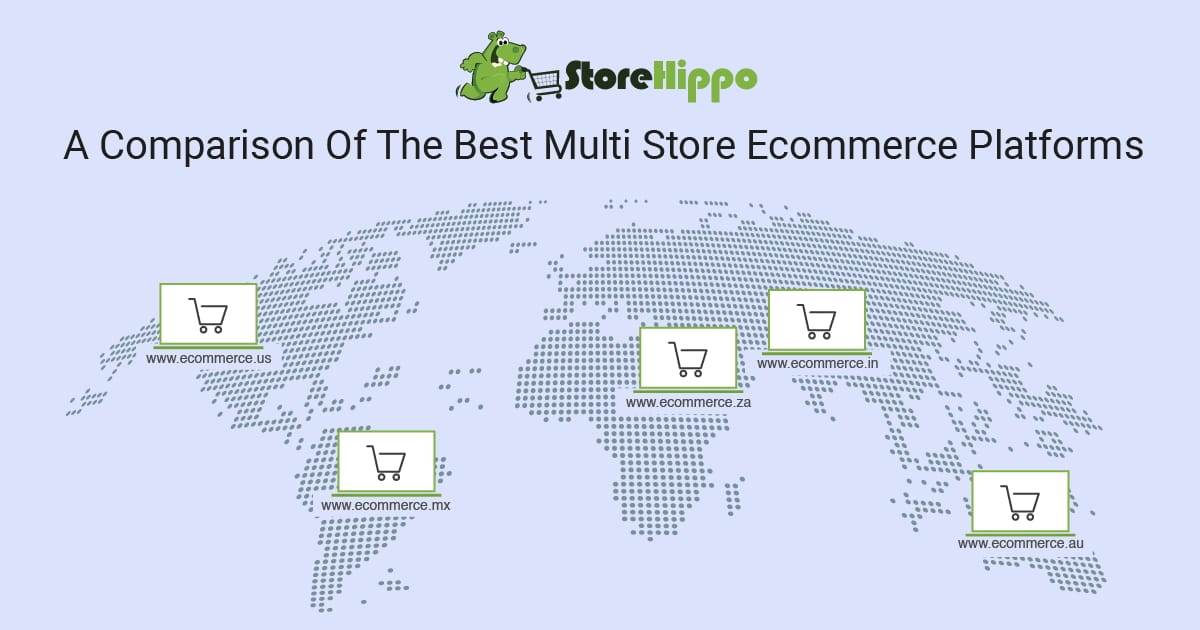

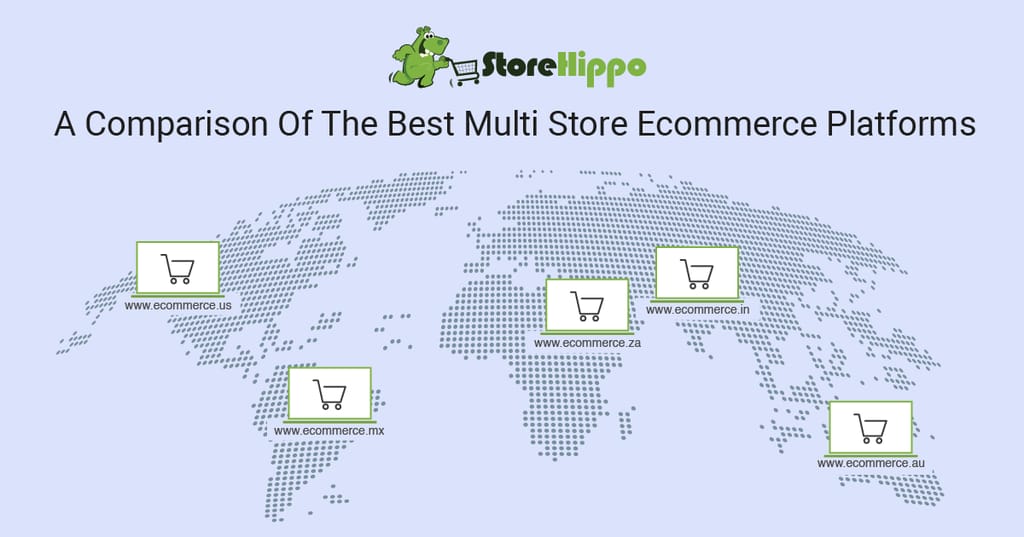


















6 Comments
Leave a Reply
Leave a Reply
Leave a Reply
Leave a Reply
Leave a Reply
Leave a Reply